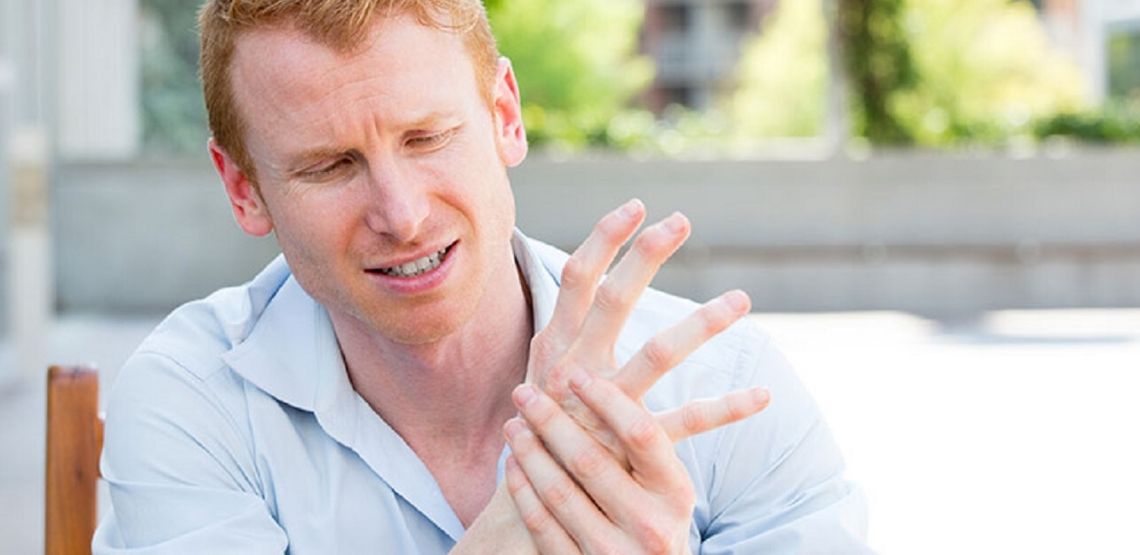Osteoarthritis Causes and Treatments
Osteoarthritis (OA) is a joint disorder that usually affects the hips, knees, hands and the spine. It is the most common form of arthritis worldwide, affecting an estimated 10% of men and 13% of women in the U.S. Osteoarthritis causes pain and develops when the smooth, rubbery cartilage that protects the ends of the bones in the joints wears away. As this happens, the ends of the bones slowly become exposed and begin to rub together, which can cause pain, swelling and stiffness in the affected joints. These symptoms can range from mild to severe, depending on the progression of damage.
Osteoarthritis is mostly related to aging, though it is also influenced by other factors such as your gender and family medical history. Although there is no guaranteed way to prevent osteoarthritis, you can reduce your risk for developing the condition by adopting lifestyle choices that promote joint health.
What Are the Symptoms of Osteoarthritis?
Osteoarthritis can develop in any of the joints, but most often affects the hips, knees, spine and hands. Symptoms usually develop slowly and get worse over time. They may include:
- Pain in the affected joints during movement
- Joint stiffness (especially upon waking or after a period of inactivity)
- Joint tenderness
- Joint swelling
- Loss of flexibility in affected joints
- Bone spurs (hard lumps of bone that grow around the affected joint)
The Causes Behind Osteoarthritis
Osteoarthritis develops when the cartilage in your joints wears away. Cartilage reduces friction in the joints and helps the bones to move easily against one another. So, when it wears away, the bare ends of the bones begin to rub together. This makes the bones rough, causing pain in the joint and inflammation in the surrounding tissues. As osteoarthritis progresses, the pain can become severe and may start to impede movement.
To some extent, the wearing away of cartilage in the joints is a natural and inevitable part of aging. The longer you live, the more wear and tear your joints go through and the more likely they are to become damaged.
However, in some cases, joint damage may be sustained from a past injury. Injuries that increase your risk of osteoarthritis in later life include:
- Torn or damaged cartilage
- Damage to ligaments
- Dislocation of joints
Other Risk Factors for Osteoarthritis
There are many different factors that increase your risk of developing osteoarthritis. Let’s explore these factors below.
Your Age
Osteoarthritis becomes more common with age and usually develops in people aged 40 and up. This is due to the natural wear and tear that accumulates in the joints over a lifetime, but may also be attributed to other age-associated factors such as weight gain, weakening muscles and reduced healing.
Your Gender
Osteoarthritis affects both genders, but for reasons that are not fully understood, it is slightly more common in women than men.
Your Weight
Being overweight or obese puts extra strain on the joints, which can significantly increase your risk for developing osteoarthritis.
Your Family History
Scientists have not yet identified a specific gene that causes osteoarthritis, but the condition is known to run in families. This means that if your parents or siblings have osteoarthritis, you also have a higher risk of getting it.
Previous Injuries
Previous injuries, such as ligament damage, cartilage tear or dislocation of joints, can increase your risk for developing early-onset osteoarthritis. These injuries may be obtained through playing sports, accidents or operations.
Your Posture
Bad posture, such as sitting or standing improperly, can also put extra strain on the joints.
Your Medical History
Certain medical conditions can affect the health of your joints and increase your chances for developing osteoarthritis. The risk also increases with diseases that affect blood flow or inflammation. Medical conditions that may lead to osteoarthritis include:
- Diabetes
- Gout
- An underactive thyroid
- Osteonecrosis
- Paget’s disease of the bone
- Your Occupation or Hobbies
Certain physical actions, such as repeatedly kneeling, squatting or lifting heavy objects, can put undue stress on the joints. If the nature of your job requires you to perform these actions over a long period of time, your risk of osteoarthritis will increase.
This is also true for people who focus only on one sport (such as running), as this can put excessive strain on particular joints (like the knees).
Related Search Topics (Ads)
Can Osteoarthritis Be Prevented?
Some of the risk factors for osteoarthritis, such as your age, gender or genetics, are unavoidable. However, you can reduce your chances for developing osteoarthritis later in life by doing the following.
Maintaining a Healthy Weight
Excess weight puts extra strain on the joints, so keeping your weight under control can help to reduce your risk of osteoarthritis.
Taking Care of Your Joints and Muscles
Regular exercise is key for keeping your body strong and healthy, but you should avoid activities that put an extortionate amount of pressure on the joints. Opt for low impact exercise such as swimming, yoga and cycling, which support the joints while helping to keep you fit and limber.
Developing Muscle Strength
Your joints are supported by your muscles; therefore, strengthening your muscles also strengthens your joints and helps to keep osteoarthritis at bay. Aim to get in at least two hours of moderate exercise per week and choose activities that have a low impact on the joints (such as walking or cycling).
Treatment Options for Osteoarthritis
Osteoarthritis cannot be cured, but there are several treatment options available that can help to reduce and manage the symptoms.
Medical Treatment for Osteoarthritis
There is a wide range of medications that can help to reduce the pain and swelling caused by osteoarthritis. Here are some of the commonly used medications.
Over the Counter Pain Medications
Pain relief drugs such as acetaminophen (paracetamol) can be used to relieve the pain caused by osteoarthritis. Nonsteroidal anti-inflammatory drugs (NSAIDs), such as ibuprofen and naproxen, can be used to reduce both pain and swelling. If your pain is severe, your doctor may prescribe opioid medications for stronger pain relief.
Topical Formulations for Pain Relief
Certain ointments, creams and gels can be applied directly to affected joints, where they help to numb the area and relieve pain. These treatments are most suitable for people with milder symptoms.
Cymbalta
This antidepressant drug may be prescribed to patients with osteoarthritis as a form of pain relief.
Corticosteroids
These drugs may be injected directly into affected joints as a way of reducing inflammation (and the swelling, pain and stiffness it causes). Corticosteroids can also be taken in pill form.
Lifestyle Changes for Managing Osteoarthritis
If you are overweight or obese, losing weight will take strain off the joints and is a highly effective way to relieve painful symptoms. Eating a healthy, balanced diet is the best way to achieve a healthy weight and eating plenty of antioxidant rich fruits and vegetables can even help to reduce joint inflammation. Other foods and supplements that may help to ease symptoms include:
- Extra virgin olive oil
- Omega 3 fatty acids (found in oily fish like tuna, mackerel and salmon)
- Vitamin C
- Green tea
Physical Therapy for Managing Osteoarthritis
Regular physical activity is essential for combating stiffness around affected joints, while building up the surrounding muscles lends them extra support, therapy techniques such as water therapy, balance therapy and strength training have all been found to reduce pain and improve joint function in people with osteoarthritis.
In Conclusion
Osteoarthritis is the most common joint disorder worldwide. It develops when the cartilage in your joints wears away, allowing the rough ends of your bones to rub together, causing pain, swelling and stiffness in that area. Though it is usually an age-related condition, the risk of osteoarthritis is also modified by a wide range of other factors. Some of these (such as your gender and family genetics) are beyond your control. Others, (such as your weight management, diet and exercise habits) can be addressed with healthy lifestyle choices that can help to reduce your risk of developing the condition.
Article Resources
- NCBI (Epidemiology of Osteoarthritis)
- Mayo Clinic (Osteoarthritis)
- NCBI (Osteoarthritis)
- Versus Arthritis (What is osteoarthritis?)
- NCBI (Sex differences in osteoarthritis of the hip and knee.)
- NCBI (Association between overweight and obesity and risk of clinically diagnosed knee, hip, and hand osteoarthritis: a population-based cohort study)
- NCBI (Risk factors for osteoarthritis: genetics.)
- NCBI (Predicting knee osteoarthritis risk in injured populations)
- Healthline (Causes of and Risk Factors for Osteoarthritis)
- Health Direct (of content Osteoarthritis prevention)
- Arthritis Foundation (Medical Treatments for Osteoarthritis Pain)
- Medical News Today (What is the best diet for osteoarthritis?)
- NCBI (Physical therapy in persons with osteoarthritis.)

